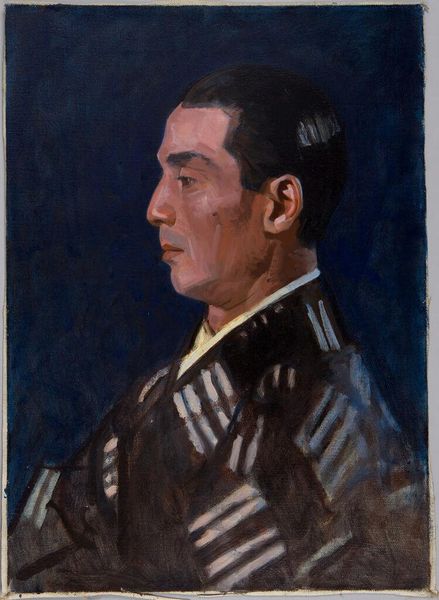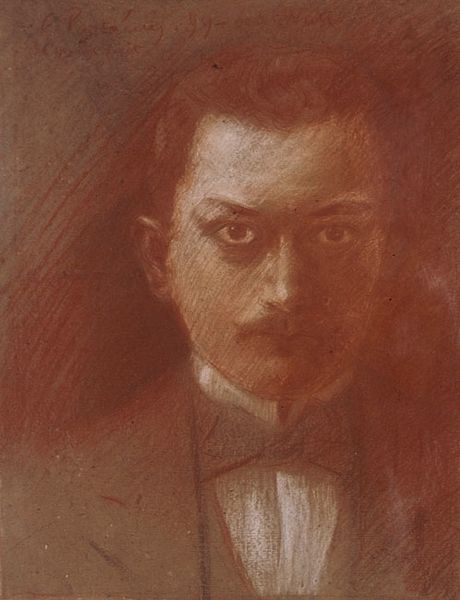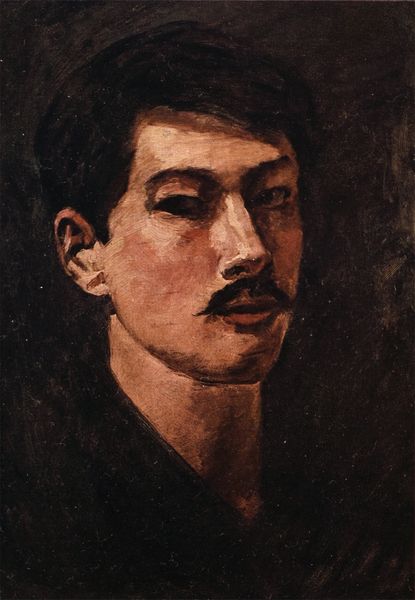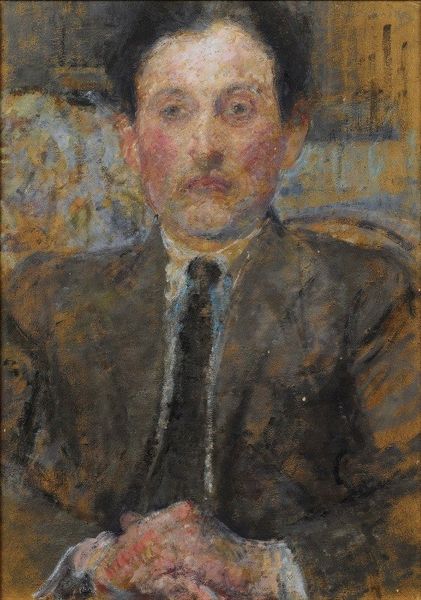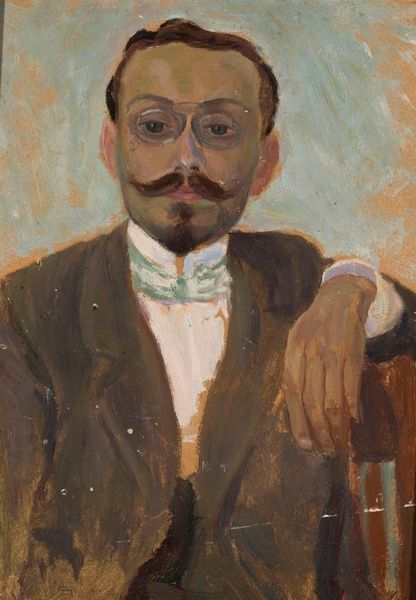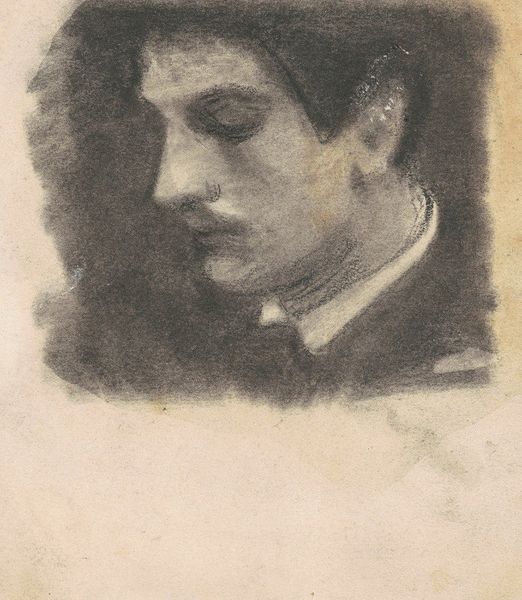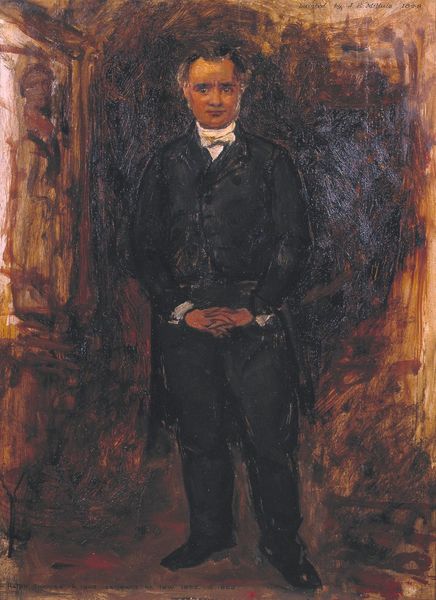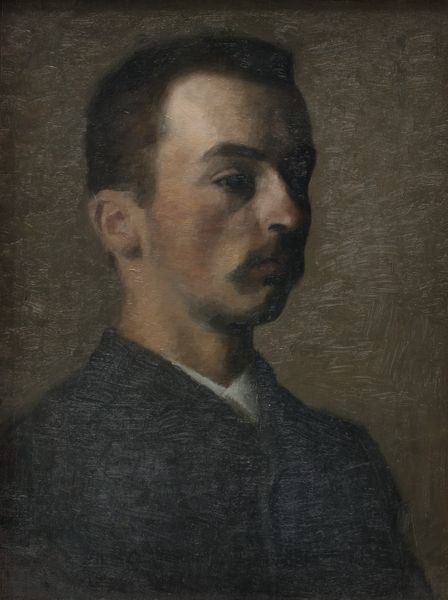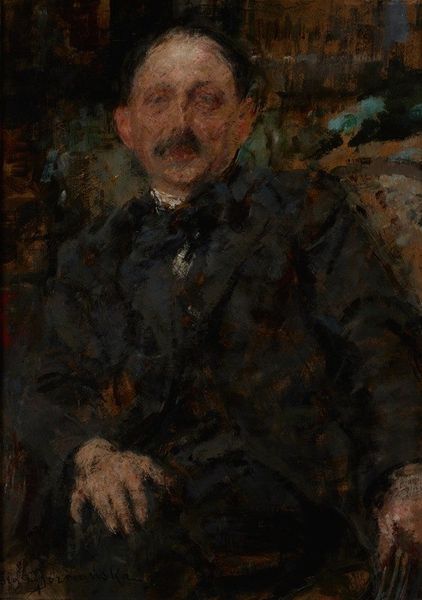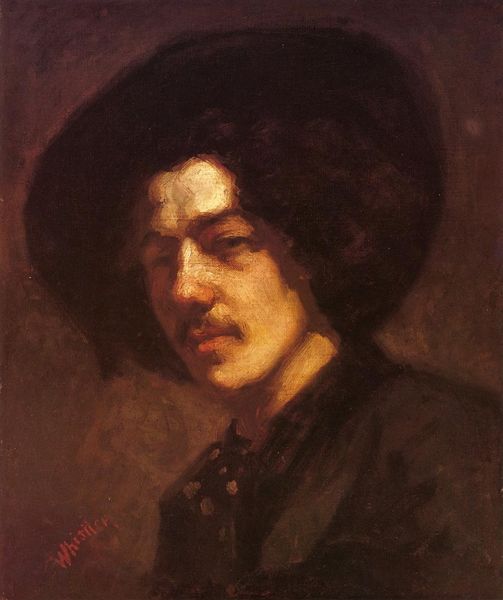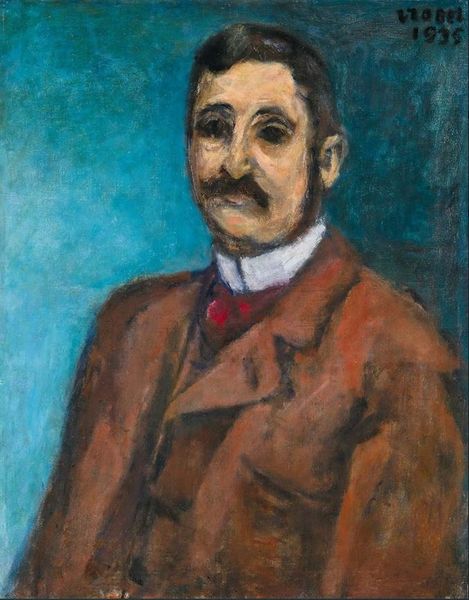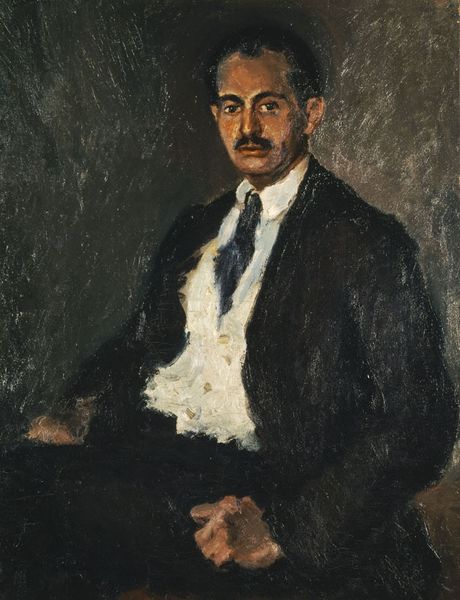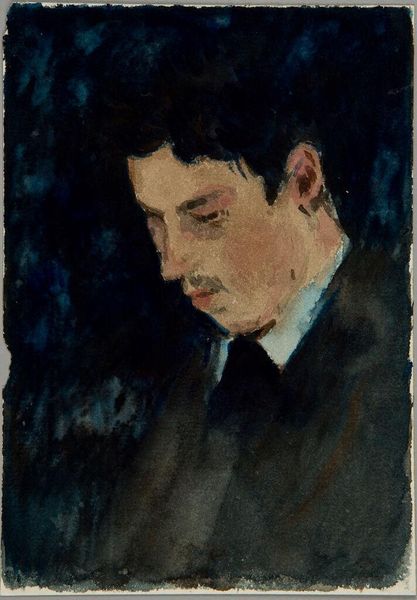
painting, oil-paint, impasto
#
portrait
#
portrait
#
painting
#
oil-paint
#
impasto
Copyright: Public domain
Editor: Here we have Fujishima Takeji's "Portrait of Mr. T," done in oil paint with impasto. The first thing I notice is how tactile it looks. What story can you tell me about this piece, with its clear emphasis on materials? Curator: The layering of oil paint, the very "stuff" of this image, is key. It draws our attention to the process, the physical act of creation, as much as to the representation of Mr. T. I see the artist's labor reflected in those deliberate strokes. Editor: So, beyond just depicting a person, the artist is calling attention to the labor that goes into making a portrait. Does this challenge traditional art boundaries? Curator: Absolutely. Think about the societal context – early 20th-century Japan encountering Western portraiture traditions. Fujishima isn't just copying a style; he's engaging with it, transforming the materials through his own labor. Editor: How so? Curator: Consider the impasto itself. Is it purely decorative, or does the raised surface serve a function, perhaps to catch light, adding depth beyond mere illusionism? Then think of sourcing of oil paints and brushes from Europe. He elevates everyday materials through skillful application, questioning the lines between high art and craft. Editor: It sounds like you're suggesting the value comes not just from the subject, but also from the artist's skillful and thoughtful use of these materials. Curator: Precisely. How materials and means shape how we ascribe value to art, or even define ‘art’ itself, is the subject matter of materialism. Editor: It is like how we read an author's intention to analyze a poem or story from an English class. Now that you bring this up, the production methods for these materials also impact the outcome, such as impasto having varied effects according to drying processes and temperature control, which I would have never considered initially. Curator: I agree! Materialism pushes us to go beyond the surface-level reading of art to recognize the interconnectedness of process, materials, and cultural influences, a truly productive take, if I might add. Editor: Definitely something I will think about as I develop my skills. Thanks!
Comments
No comments
Be the first to comment and join the conversation on the ultimate creative platform.
